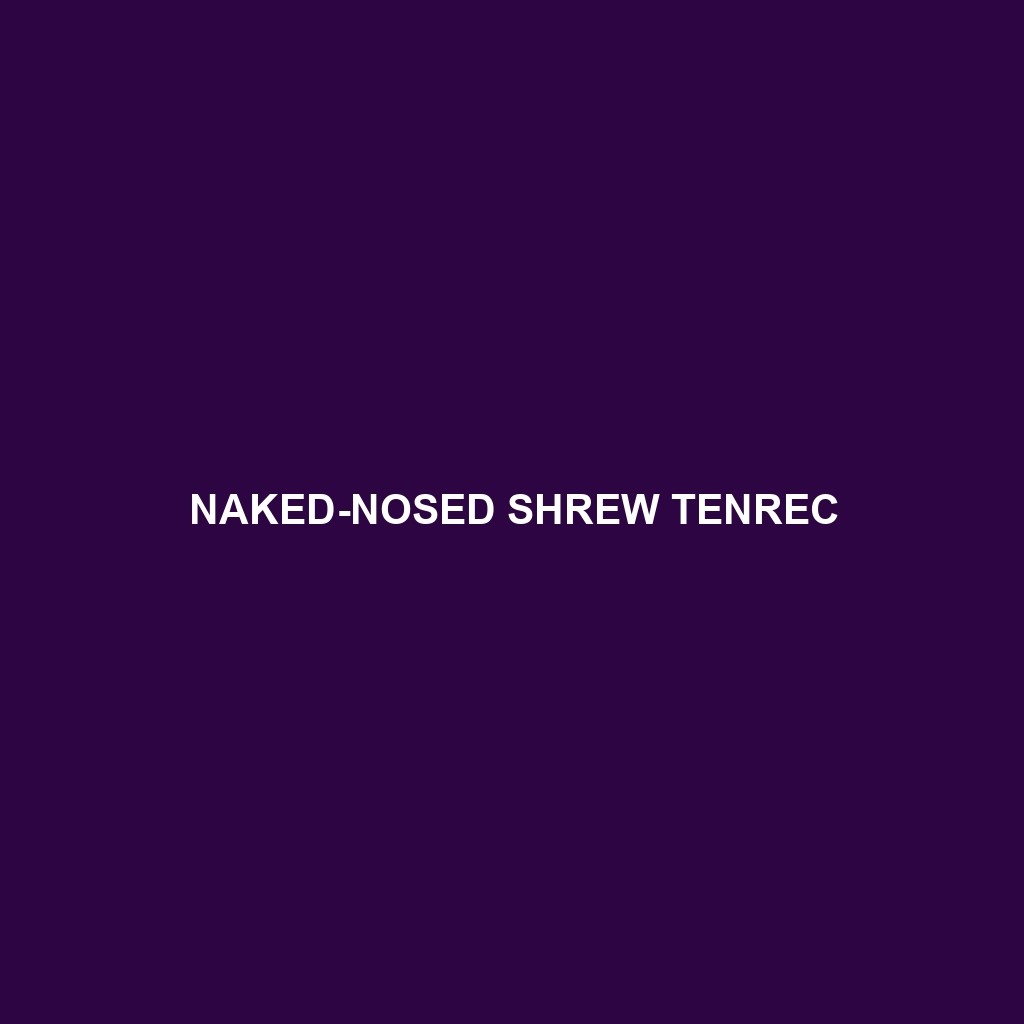Jenkins’s Shrew Tenrec
Jenkins’s Shrew Tenrec (Microgale jenkinsae) is a small, elusive insectivorous mammal native to the island of Madagascar. As a member of the Tenrecidae family, this species exhibits a fascinating blend of physical and behavioral traits that make it a unique subject of study in the mammalian world. Its shrew-like appearance and nocturnal habits contribute to its secretive nature, making it a rare sight even for seasoned wildlife observers.
Physical Characteristics:
Size: Jenkins’s Shrew Tenrec is a small mammal, typically measuring around 10 to 15 cm in length, with a tail that can add an additional 8 to 12 cm. Their weight ranges from 20 to 40 grams.
Coloration: The fur of Jenkins’s Shrew Tenrec is generally a mix of brown and gray, providing effective camouflage against the forest floor. Their underbellies tend to be lighter, often a pale gray or white.
Special Features: They have a pointed snout and small, beady eyes adapted for their nocturnal lifestyle. Their limbs are short, with claws adept for digging and foraging in the leaf litter. The tail is long and slender, aiding in balance and agility.
Behaviors:
Social Interactions: Jenkins’s Shrew Tenrecs are primarily solitary animals. They are known to be territorial and communicate through a series of high-pitched squeaks and scent markings.
Feeding Habits: They are insectivorous, feeding on a diet primarily consisting of insects, worms, and other small invertebrates. They use their acute sense of smell to locate prey in the dark.
Ecological Roles: As insectivores, these tenrecs play a vital role in controlling insect populations within their habitat. Their foraging activities also aid in soil aeration, contributing to the health of the forest ecosystem.
Habitats:
Jenkins’s Shrew Tenrec can be found in the dense rainforests of eastern Madagascar. They prefer moist, tropical environments where leaf litter and underbrush provide ample cover and foraging opportunities.
They are most commonly found at altitudes ranging from sea level up to 1,500 meters.
Adaptations:
Nocturnal Lifestyle: Their nocturnal habits help them avoid many predators and reduce competition for food.
Camouflage: Their coloration helps them blend into the forest floor, providing protection from predators.
Sensory Adaptations: Enhanced olfactory senses and sensitive whiskers allow them to navigate and hunt effectively in the dark.
Conservation Status:
The conservation status of Jenkins’s Shrew Tenrec is currently listed as Least Concern on the IUCN Red List. However, habitat loss due to deforestation and human activities remain potential threats.
Conservation efforts are focused on habitat preservation and protecting the biodiversity of Madagascar’s rainforests.
Fun Facts:
Jenkins’s Shrew Tenrec is named in honor of Paul Jenkins, a noted biologist who significantly contributed to the study of Madagascar’s wildlife.
Despite their name and appearance, they are not closely related to true shrews; their resemblance is a result of convergent evolution.
They exhibit a high degree of seasonal activity, often becoming less active during the dry season when food is scarce.
Jenkins’s Shrew Tenrec is a remarkable example of Madagascar’s unique biodiversity. Its specialized adaptations and ecological role underscore the importance of preserving its natural habitat for future generations to study and enjoy.
